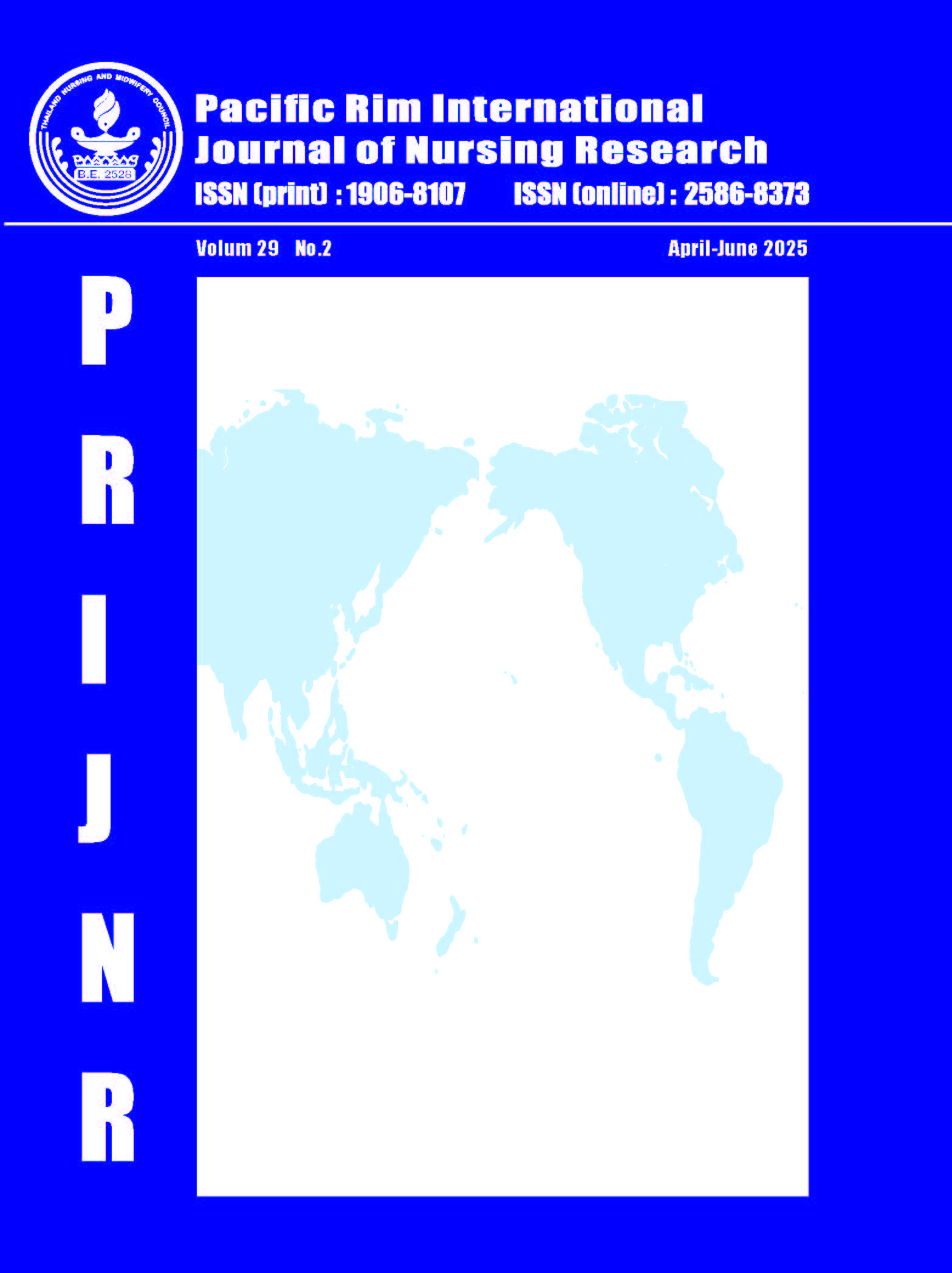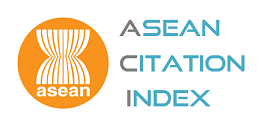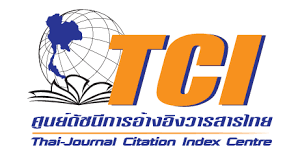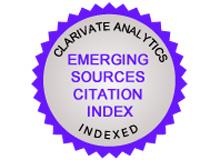Effects of Exercise on Muscle Strength and VO2 Peak in Patients with Pulmonary Hypertension: A Systematic Review and Meta-Analysis
DOI:
https://doi.org/10.60099/prijnr.2025.271912Keywords:
Exercise, Meta-analysis, Muscle strength, Pulmonary hypertension, Systematic review, VO2 peakAbstract
Exercise programs are one of the treatments used to extend the life expectancy of individuals with pulmonary hypertension; however, there is conflicting evidence regarding how well exercise increases muscle strength and VO2 peak. Six databases and one other source were used in a comprehensive search conducted from June to August 2024 to find relevant research published in English between 2006 and 2022. The standard mean difference, mean difference, and risk difference with a 95% confidence interval were used to determine the effect of exercise. Biased publications were presented with a risk of bias summary/graph. Employing the Critical Appraisal Skills Program, all reviewers independently assessed the methodological quality of the included studies and extracted data.
The results showed 13 randomized control trial studies with 421 respondents, consisting of 204 and 217 in the intervention and control groups, respectively. Exercise had significant effects on improving muscle strength, VO2 peak (primary outcomes), oxygen saturation, cardiac output, six-minute walk test, and several aspects of health-related quality of life as assessed by the SF-36 questionnaire (secondary outcomes), and there were no serious adverse events linked to exercise. However, exercise did not significantly alter VE/VCO2 slope, cardiac index, role physical, vitality, mental health, physical component summary, or mental component summary between the intervention than control groups among people with pulmonary hypertension. In conclusion, an exercise program of supervised may improve VO2 peak and muscle strength and does not result in an increased risk of serious adverse events. Nonetheless, individuals with severe conditions of pulmonary hypertension should be carefully considered when doing exercise programs.
References
Hoeper MM, Humbert M, Souza R, Idrees M, Kawut SM, Sliwa-Hahnle K, et al. A global view of pulmonary hypertension. Lancet Respir Med. 2016;4(4):306-22. doi:10.1016/S2213-2600(15)00543-3 DOI: https://doi.org/10.1016/S2213-2600(15)00543-3
Stewart S, Chan YK, Playford D, Harris S, Strange GA. Incident pulmonary hypertension in 13 488 cases investigated with repeat echocardiography: a clinical cohort study. ERJ Open Res. 2023;9(5):1-12. doi:10.1183/23120541.00082-2023 DOI: https://doi.org/10.1183/23120541.00082-2023
Kim D, George MP. Pulmonary hypertension. Med Clin North Am. 2019;103(3):413-23. doi:10.1016/j.mcna.2018.12.002 DOI: https://doi.org/10.1016/j.mcna.2018.12.002
Emmons-Bell S, Johnson C, Boon-Dooley A, Corris PA, Leary PJ, Rich S, Yacoub M, Roth GA. Prevalence, incidence, and survival of pulmonary arterial hypertension: A systematic review for the global burden of disease 2020 study. Pulm Circ. 2022;12:e12020. doi.org/10.1002/pul2.12020 DOI: https://doi.org/10.1002/pul2.12020
Galie N, Humbert M, Vachiery JL, Gibbs S, Lang I, Torbicki A, et al. 2015 ESC/ERS Guidelines for the diagnosis and treatment of pulmonary hypertension: The joint task force for the diagnosis and treatment of pulmonary hypertension of the European Society of Cardiology (ESC) and the European Respiratory Society (ERS): Endorsed by: Association for European Paediatric and Congenital Cardiology (AEPC), International Society for Heart and Lung Transplantation (ISHLT). Eur Heart J. 2016;37(1):67-119. doi:10.1093/eurheartj/ehv317 DOI: https://doi.org/10.1093/eurheartj/ehv317
Stewart S, Strange GA, Playford D. The challenge of an expanded therapeutic window in pulmonary hypertension. Nat Rev Cardiol. 2020;17(4):195-97. doi:10.1038/s41569-020-0332-9 DOI: https://doi.org/10.1038/s41569-020-0332-9
Fukui S, Ogo T, Takaki H, Ueda J, Tsuji A, Morita Y, et al. Efficacy of cardiac rehabilitation after balloon pulmonary angioplasty for chronic thromboembolic pulmonary hypertension. Heart. 2016;102(17):1403-09. doi:10.1136/heartjnl-2015-309230 DOI: https://doi.org/10.1136/heartjnl-2015-309230
Plunkett MJ, Sayegh ALC, McWilliams TJ, Sithamparanathan S, Paton JFR, Fisher JP. The skeletal muscle metaboreflex: a novel driver of ventilation, dyspnoea and pulmonary haemodynamics during exercise in pulmonary arterial hypertension. Eur Respir J. 2024;63(1):2300952. doi:10.1183/13993003.00952-2023 DOI: https://doi.org/10.1183/13993003.00952-2023
Benavides-Cordoba V, Spruit MA. Muscle training in patients with pulmonary hypertension. a narrative review. Colomb Med (Cali). 2021;52(4):e2015163. doi:10.25100/cm.v52i4.5163 DOI: https://doi.org/10.25100/cm.v52i4.5163
Malenfant S, Potus F, Mainguy V, Leblanc E, Malenfant M, Ribeiro F, et al. Impaired skeletal muscle oxygenation and exercise tolerance in pulmonary hypertension. Med Sci Sports Exerc. 2015;47(11):2273-82. doi:10.1249/MSS.0000000000000696 DOI: https://doi.org/10.1249/MSS.0000000000000696
Drummond FR, Leite LB, de Miranda DC, Drummond LR, Lavorato VN, Soares LL, et al. Skeletal muscle dysfunctions in pulmonary arterial hypertension: Effects of aerobic exercise training. Front Physiol. 2023;14:1148146. doi:10.3389/fphys.2023.1148146 DOI: https://doi.org/10.3389/fphys.2023.1148146
Tobita K, Goda A, Teruya K, Nishida Y, Takeuchi , Kikuchi, H, et al. Exercise capacity and ventilatory efficiency in patients with pulmonary arterial hypertension. J Am Heart Assoc. 2023;12(11):e026890. doi:10.1161/JAHA.122.026890 DOI: https://doi.org/10.1161/JAHA.122.026890
Aslan GK, Akinci B, Yeldan I, Okumus G. A randomized controlled trial on inspiratory muscle training in pulmonary hypertension: Effects on respiratory functions, functional exercise capacity, physical activity, and quality of life. Heart Lung. 2020;49(4):381-87. doi:10.1016/j.hrtlng.2020.01.014 DOI: https://doi.org/10.1016/j.hrtlng.2020.01.014
Shang X, Xiao S, Dong N, Lu R, Wang L, Wang B, et al. Assessing right ventricular function in pulmonary hypertension patients and the correlation with the New York Heart Association (NYHA) classification. Oncotarget. 2017;8(52):90421-29. doi:10.18632/oncotarget.19026 DOI: https://doi.org/10.18632/oncotarget.19026
Mainguy V, Maltais F, Saey D, Gagnon P, Martel S, Simon M, Provencher S. Peripheral muscle dysfunction in idiopathic pulmonary arterial hypertension. Thorax. 2010;65:113–17. doi:10.1136/thx.2009.117168 DOI: https://doi.org/10.1136/thx.2009.117168
Pepplinkhuizen S, Eshuis G, Zijlstra WM, Timmer CY, Ploegstra MJ, Lelieveld OT., et al. Muscle strength is reduced in children with pulmonary arterial hypertension. Pulm Circ. 2023;13(2):e12246. doi:10.1002/pul2.12246 DOI: https://doi.org/10.1002/pul2.12246
Ogawa T, Spina RJ, Martin WH, Kohrt WM, Schechtman KB, Holloszy JO, et al. Effects of aging, sex, and physical training on cardiovascular responses to exercise. Circulation. 1992;86(2):494-503. doi:10.1161/01.cir.86.2.494 DOI: https://doi.org/10.1161/01.CIR.86.2.494
Pluim BM, Zwinderman AH, van der Laarse A, van der Wall EE. The athlete's heart. A meta-analysis of cardiac structure and function. Circulation. 2000;101(3):336-44. doi:10.1161/01.cir.101.3.336 DOI: https://doi.org/10.1161/01.CIR.101.3.336
Blomstrand E, Krustrup P, Sondergaard H, Radegran G, Calbet JA, Saltin B. Exercise training induces similar elevations in the activity of oxoglutarate dehydrogenase and peak oxygen uptake in the human quadriceps muscle. Pflugers Arch. 2011;462(2):257-65. doi:10.1007/s00424-011-0978-6 DOI: https://doi.org/10.1007/s00424-011-0978-6
Ohira Y, Tabata I. Muscle metabolism during exercise: anaerobic threshold does not exist. Ann Physiol Anthropol. 1992;11(3):319-323. doi:10.2114/ahs1983.11.319 DOI: https://doi.org/10.2114/ahs1983.11.319
Knuiman P, Hopman MTE, Mensink, M. Glycogen availability and skeletal muscle adaptations with endurance and resistance exercise. Nutr Metab. 2015;12:15. doi:10.1186/s12986-015-0055-9 DOI: https://doi.org/10.1186/s12986-015-0055-9
Grünig E, Eichstaedt C, Barberà JA, Benjamin N, Blanco I, Bossone E, et al. ERS statement on exercise training and rehabilitation in patients with severe chronic pulmonary hypertension. Eur Respir J. 2019;53(2):1800332. doi:10.1183/13993003.00332-2018 DOI: https://doi.org/10.1183/13993003.00332-2018
Humbert M, Kovacs G, Hoeper MM, Badagliacca R, Berger RM, Brida M, et al. 2022 ESC/ERS guidelines for the diagnosis and treatment of pulmonary hypertension. Eur Respir J. 2022;60(6):2200879. doi:10.1183/13993003.00879-2022 DOI: https://doi.org/10.1183/13993003.00879-2022
Galie N, Corris PA, Frost A, Girgis RE, Granton J, Jing ZC, et al. Updated treatment algorithm of pulmonary arterial hypertension. J Am Coll Cardiol. 2013;62(25 Suppl):60-72. doi.org/10.1016/j.jacc.2013.10.031 DOI: https://doi.org/10.1016/j.jacc.2013.10.031
Ganderton L, Jenkins S, Gain K, Fowler R, Winship P, Lunt D, et al. Short term effects of exercise training on exercise capacity and quality of life in patients with pulmonary arterial hypertension: protocol for a randomised controlled trial. BMC Pul Med. 2011;11:1-7. doi:10.1186/1471-2466-11-25 DOI: https://doi.org/10.1186/1471-2466-11-25
Wojciuk M, Ciolkiewicz M, Kuryliszyn-Moskal A, Chwiesko-Minarowska S, Sawicka E, Ptaszynska-Kopczynska K, et al. Effectiveness and safety of a simple home-based rehabilitation program in pulmonary arterial hypertension: an interventional pilot study. BMC Sports Sci Med Rehabil. 2021;13(1):79. doi:10.1186/s13102-021-00315-y DOI: https://doi.org/10.1186/s13102-021-00315-y
Kahraman BO, Tanriverdi A, Savci S, Odaman H, Akdeniz B, Sevinc C, et al. Effects of inspiratory muscle training in patients with pulmonary hypertension. Am J Cardiol. 2023;203:406-13. doi: 10.1016/j.amjcard.2023.06.097 DOI: https://doi.org/10.1016/j.amjcard.2023.06.097
Yilmaz BC, Guclu MB, Keles MN, Tacoy GA, Cengel A. Effects of upper extremity aerobic exercise training on oxygen consumption, exercise capacity, dyspnea and quality of life in patients with pulmonary arterial hypertension. Heart Lung. 2020;49(5):564-71. doi:10.1016/j.hrtlng.2020.04.006 DOI: https://doi.org/10.1016/j.hrtlng.2020.04.006
González-Saiz L, Fiuza-Luces C, Sanchis-Gomar F, Santos-Lozano A, Quezada-Loaiza CA, Flox-Camacho A, et al. Benefits of skeletal-muscle exercise training in pulmonary arterial hypertension: The WHOLEi+ 12 trial. Int J Cardiol. 2017;231:277-83. doi:10.1016/j.ijcard.2016.12.026 DOI: https://doi.org/10.1016/j.ijcard.2016.12.026
Ertan O, Aslan GK, Akinci B, Okumus G. Effects of ground-based walking training in pulmonary hypertension. Eur Respir J. 2020;56:4743. doi:10.1183/13993003.congress-2020.4743 DOI: https://doi.org/10.1183/13993003.congress-2020.4743
Fox BD, Kassirer M, Weiss I, Raviv Y, Peled N, Shitrit D, et al. Ambulatory rehabilitation improves exercise capacity in patients with pulmonary hypertension. J Card Fail. 2011;17(3):196-200. doi:10.1016/j.cardfail.2010.10.004 DOI: https://doi.org/10.1016/j.cardfail.2010.10.004
Kagioglou O, Mouratoglou SA, Giannakoulas G, Kapoukranidou D, Anifanti M, Deligiannis A, et al. Long‐term effect of an exercise training program on physical functioning and quality of life in pulmonary hypertension: A randomized controlled trial. Biomed Res Int. 2021;2021(1):8870615. doi:10.1155/2021/8870615 DOI: https://doi.org/10.1155/2021/8870615
Mereles D, Ehlken N, Kreuscher S, Ghofrani S, Hoeper MM, Halank M, et al. Exercise and respiratory training improve exercise capacity and quality of life in patients with severe chronic pulmonary hypertension. Circulation. 2006;114(14):1482-89. doi:10.1161/CIRCULATIONAHA.106.61839 DOI: https://doi.org/10.1161/CIRCULATIONAHA.106.618397
Chan L, Kennedy M, Woolstenhulme J, Connors G, Nathan S, Weir N, et al. Improved six-minute walk distance and cardiorespiratory fitness in patients with pulmonary arterial hypertension following an intensive exercise program. Chest. 2011;140(4):854A. doi:10.1378/chest.1117488 DOI: https://doi.org/10.1378/chest.1117488
Ehlken N, Lichtblau M, Klose H, Weidenhammer J, Fischer C, Nechwatal R, et al. Exercise training improves peak oxygen consumption and haemodynamics in patients with severe pulmonary arterial hypertension and inoperable chronic thrombo-embolic pulmonary hypertension: a prospective, randomized, controlled trial. Eur Heart J. 2016;37(1):35-44. doi:10.1093/eurheartj/ehv337 DOI: https://doi.org/10.1093/eurheartj/ehv337
Naci B, Demir R, Onder O.O, Sinan UY, Kucukoglu MS. Effects of adding respiratory training to osteopathic manipulative treatment on exhaled nitric oxide level and cardiopulmonary function in patients with pulmonary arterial hypertension. Am J Cardiol. 2022;162:184-90. doi:10.1016/j.amjcard.2021.09.023 DOI: https://doi.org/10.1016/j.amjcard.2021.09.023
Morris NR, Kermeen FD, Jones AW, Lee JY, Holland AE. Exercise-based rehabilitation programmes for pulmonary hypertension. Cochrane Database Syst Rev. 2023;3(3):CD011285. doi:10.1002/14651858.CD011285.pub3 DOI: https://doi.org/10.1002/14651858.CD011285.pub3
Moreira-Goncalves D, Ferreira R, Fonseca H, Padrao AI, Moreno N, Silva AF., et al. Cardioprotective effects of early and late aerobic exercise training in experimental pulmonary arterial hypertension. Basic Res Cardiol. 2015;110(6):57. doi:10.1007/s00395-015-0514-5
Madonna R, De Caterina R, Geng YJ. Aerobic exercise-related attenuation of arterial pulmonary hypertension: A right arrow targets the disease? Vascul Pharmacol. 2016;87:6-9. doi:10.1016/j.vph.2016.10.002 DOI: https://doi.org/10.1016/j.vph.2016.10.002
Moreira-Goncalves D, Ferreira R, Fonseca H, Padrao AI, Moreno N, Silva AF, et al. Cardioprotective effects of early and late aerobic exercise training in experimental pulmonary arterial hypertension. Basic Res Cardiol. 2015;110(6):57. doi:10.1007/s00395-015-0514-5 DOI: https://doi.org/10.1007/s00395-015-0514-5
Yang D, Wang L, Jiang P, Kang R, Xie Y. Correlation between hs-CRP, IL-6, IL-10, ET-1, and chronic obstructive pulmonary disease combined with pulmonary hypertension. J Healthc Eng. 2022;2022:3247807. doi: 10.1155/2022/3247807 DOI: https://doi.org/10.1155/2022/3247807
Guazzi M. Exercise VE/VCO2 Slope: An endurance marker of prognosis also in patients with HFpEF and pulmonary hypertension, at Least! J Card Fail. 2017;23(1):783-85. doi:10.1016/j.cardfail.2017.09.003 DOI: https://doi.org/10.1016/j.cardfail.2017.09.003
Shimokawahara H, Inami T, Kubota K, Taniguchi Y, Hashimoto H, Saito AM, et al. Protocol for a multicentre, double-blind, randomised, placebo-controlled trial of riociguat on peak cardiac index during exercise in patients with chronic thromboembolic pulmonary hypertension after balloon pulmonary angioplasty (THERAPY-HYBRID-BPA trial). BMJ Open. 2023;13(7):e072241. doi:10.1136/bmjopen-2023-072241 DOI: https://doi.org/10.1136/bmjopen-2023-072241
Downloads
Published
How to Cite
Issue
Section
Categories
License
Copyright (c) 2025 Pacific Rim International Journal of Nursing Research

This work is licensed under a Creative Commons Attribution-NonCommercial-NoDerivatives 4.0 International License.
Copyright: The Pacific Rim International Journal of Nursing Research, Thailand Nursing & Midwifery Council has exclusive rights to publish, reproduce and distribute the manuscript and all contents therein.







.png)


